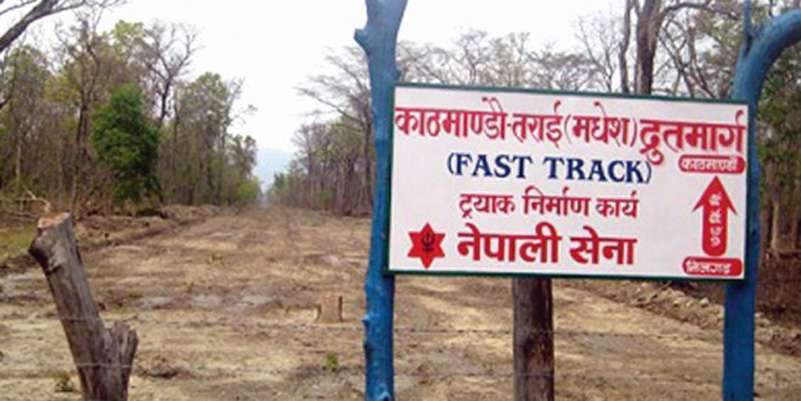Construction of the access road for the 1,063 MW Upper Arun Hydropower Project, led by the Nepal Electricity Authority (NEA), has gained momentum in the remote Bhotkhola Rural Municipality of Sankhuwasabha district. This vital 21-kilometer road, connecting the powerhouse to the dam site, includes two kilometers of tunnels and marks a critical step in the project’s development.
The access road starts from Chongrang, near Gola Bazaar in Bhotkhola-4, and extends to the dam site in Chepuwa village, Ward 2. To bridge the gap from the Koshi Highway, which currently reaches Chongrang, the project is building a 70-meter-long steel arch bridge over the Arun River.
Given the challenging terrain and absence of roads, heavy construction equipment, including boomers, excavators, robotic shotcrete machines, and concrete pumps, is being airlifted to the site via helicopters, including the MI-17. Over 300 trips have been made so far to transport essential machinery, NEA reports.
Supporting infrastructure, such as storage bunkers for explosives and accommodations for personnel overseeing tunnel excavation, is under construction. Once completed, excavation from both Namase and Ruku locations will begin. The project has also initiated track opening for the road from Chongrang to Namase and is finalizing the construction of its office and staff housing facilities.
Delays Overcome, Progress Accelerates
The project faced an 18-month delay due to prolonged approval processes for using national forest land and clearing trees. However, NEA Managing Director and Chairman of Upper Arun Hydro-Electric Limited (UAHEL), Kulman Ghising, along with UAHEL Managing Director Fanendra Raj Joshi, recently visited the site to review progress.
During discussions with project stakeholders, Ghising stressed the importance of collaboration to expedite the construction of the access road, which is pivotal for transporting materials for the main infrastructure. “The progress so far is encouraging. Once the road is operational, moving construction materials will become significantly easier," he said.
Financing: Domestic Investment if World Bank Withdraws
Amid concerns about the World Bank's hesitance, Ghising assured stakeholders that the project would proceed even without international support, in case the World Bank withdraws from financing.
“The World Bank has been leading a $2 billion co-financing initiative involving the Asian Development Bank (ADB) and the Japan International Cooperation Agency (JICA), but delays in financial arrangements persist. Discussions are ongoing at administrative and diplomatic levels,” Ghising said.
If international financing does not materialize, funds will be raised domestically through Nepalese banks, financial institutions, and share offerings to citizens at home and abroad, he added.
Financing Model and Equity Distribution
The estimated $1.75 billion (approximately Rs 214 billion) project will follow the financing model with 70 percent debt and 30 percent equity, according to the NEA.
Local banks and financial institutions, led by the Hydroelectricity Investment and Development Company (HIDCL), have signed a memorandum of understanding to mobilize Rs 53 billion.
Of the equity, 51 percent will be borne by the project promoter, Upper Arun Hydro-electric Limited, while 49 percent will come from public shares. Shares will also be allocated to local governments, affected residents, and the general public under the People’s Hydropower Program.
Construction Timeline and Impact
The Upper Arun project aims to begin construction by early 2026 and complete it by 2031. Preparatory works, including design reviews and tender documentation, are already underway. NEA has acquired 232.14 hectares of private land for the project, compensating 99 percent of affected owners. Resettlement efforts for 22 displaced households are ongoing.
Designed to operate at full capacity for six hours daily during winter, the project will generate approximately 4.53 billion units of electricity annually, with 30 percent of this output produced during the dry season.
To integrate the energy into Nepal’s grid, a 6-kilometer, 400 kV transmission line will connect the project to a substation in Sankhuwasabha. The 40 MW Ikhuwa Hydropower Project, under the People’s Hydropower Program, will complement Upper Arun’s output.
The Upper Arun Hydropower Project is expected to significantly boost Nepal’s energy production and economic growth. Despite logistical and financial hurdles, the project underscores Nepal’s determination to harness its vast hydropower potential and achieve energy self-sufficiency and expand power trade.













